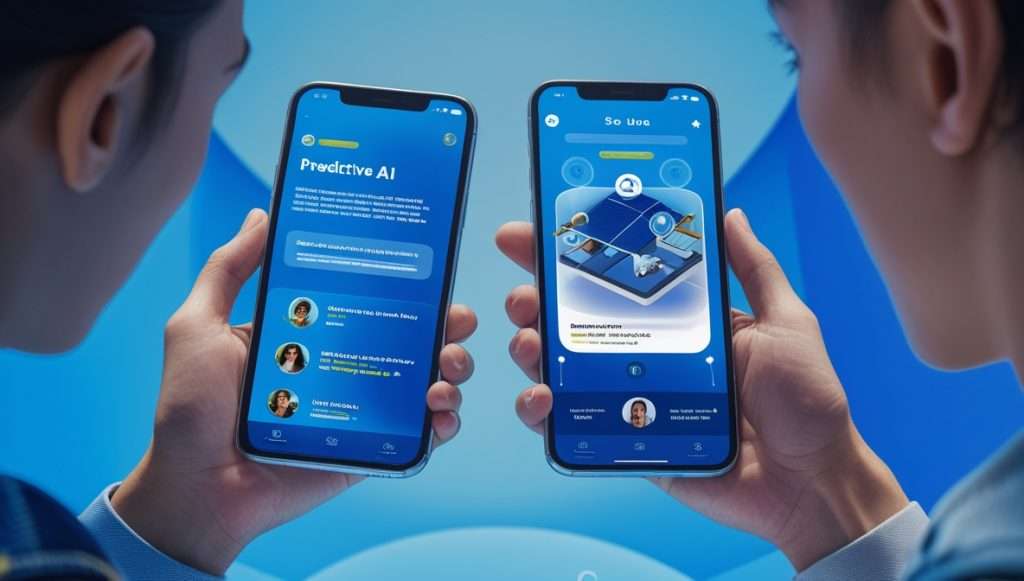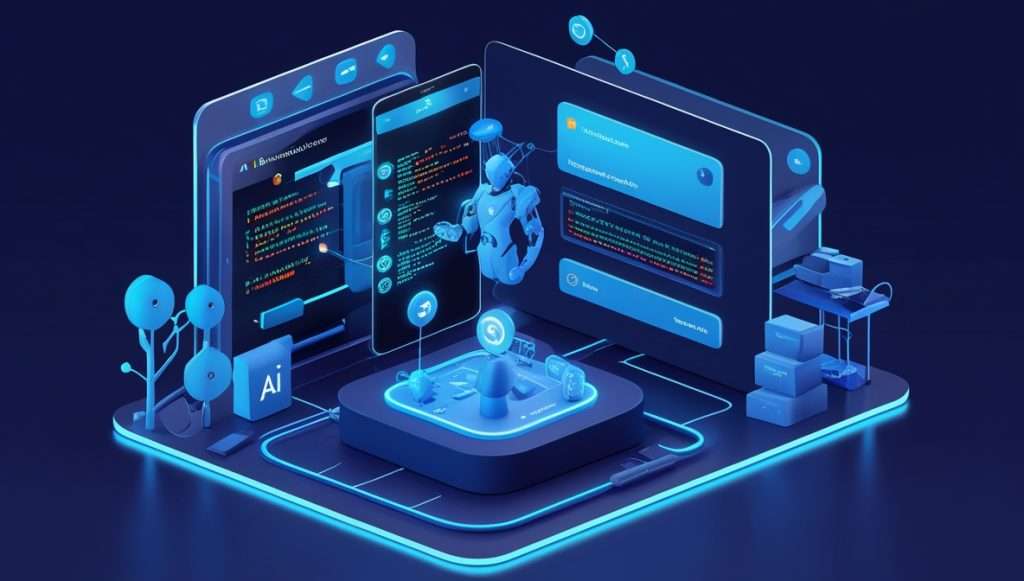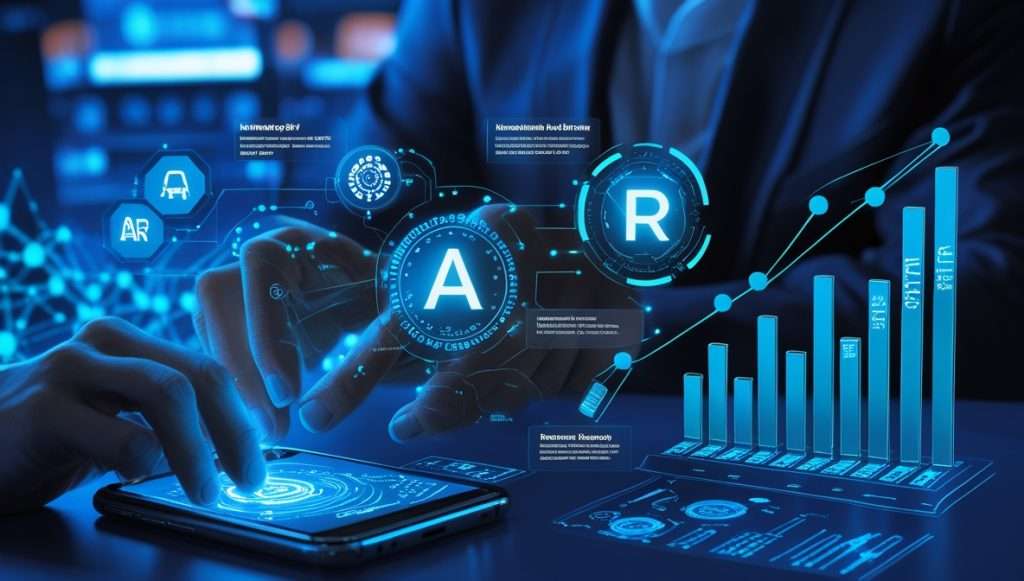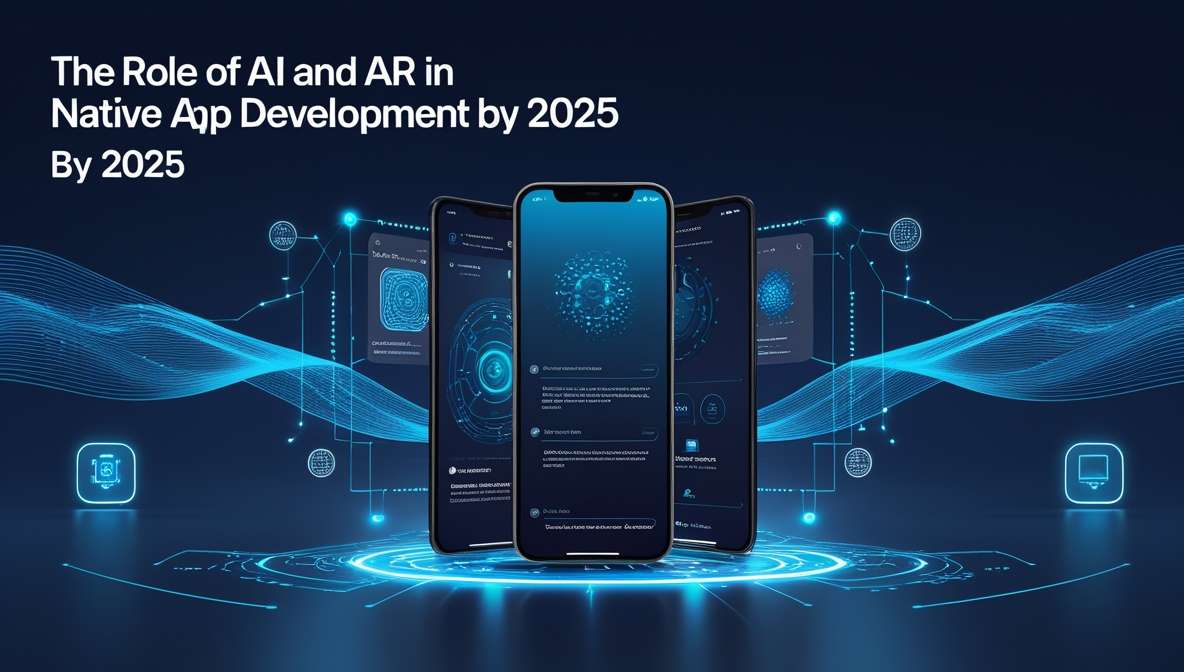AI and AR in Native App Development are revolutionizing the way applications are created, enhancing user experiences and optimizing operational efficiencies. Mobile applications will undergo a complete transformation in their technical approach through these technologies until 2025 which will create intelligent interactive and immersive solutions.
How AI and AR are Transforming User Experience

AI alongside AR represents two fundamental forces which fundamentally transform how mobile application users interact with their devices. These technologies build up immersive personalized encounters that produce elevated engagement metrics and wider user satisfaction. AI drives app intelligence by using user behavior data to acquire knowledge about their preferences throughout extended usage periods. Machine learning algorithms enable applications to use predictive models which let them predict user needs to provide personalized features and suggestions.
The personalization level dramatically increases engagement while it improves usability which results in better app effectiveness for meeting user requirements. Interaction receives a revolutionary upgrade because AR allows users to see digital content merged with real-world surroundings. Through AR-powered navigation systems and interactive games as well as retail experiences users experience better engagement when interacting with digital content in natural ways. The detailed method of user interaction through mobile apps creates more exciting and simpler ways for users to connect with applications.
Enhancing Personalization
AI tools study user activities to show customized information which creates apps that become more suitable and appealing for users. Through personalized content the system makes its users happier and leads to better customer loyalty levels. AI allows applications to swiftly gather and manage user data which helps developers craft features that suit individual user behaviors. AI systems enable user interface customization through tracked preferences together with past interaction data to deliver relevant content and boost app usability.
The customized approach keeps users active on the app applications while also extending their usage times. AI-driven virtual assistants along with chatbots offer real-time assistance that increases user contentment levels. The platform responds using customized solutions which draw from past client engagements while delivering efficient solutions for customer inquiries. This contributes to improved user retention and a seamless app experience.
Immersive Interactions
Users can experience interactivity through AR by allowing digital features to unite with actual environments. Users enjoy better experiences because of features that let them virtually try things on while benefiting from AR navigation. The visual capabilities of AR-powered applications enable users to preview products before buying thus they serve industries that focus on fashion and furniture especially well.
Gaming applications along with AR-powered interactions fuel innovation that improves user engagement during gameplay. AR-enhanced gaming applications let users participate with game elements which move through their physical environment thus creating deep interactive experiences. Users experience mobile gaming at higher levels of personal interaction because of this design strategy which surpasses typical game interfaces.
Real-Time Adaptability
Led by AI systems which acquire user engagement data throughout sessions the programs make instant modifications. The app features become more usable because of this functionality that delivers uninterrupted user experiences. The feature of real-time adaptability makes applications automatically respond to changing user needs on the spot. Data patterns processed by AI-driven algorithms trigger modifications to app’s features.
The adaptability feature proves essential for fintech platforms because their users’ patterns change according to evolving market movements. The technology uses artificial intelligence to detect abnormal patterns which enables it to stop fraudulent activity. Users enjoy a safe app environment since AI-powered fraud detection systems track user interactions to identify suspicious patterns automatically.
The Impact of AI and AR in Native App Development Processes

Integrating AI and AR in Native App Development Smooth development process by automating tasks, improving efficiency, and reducing costs. AI-powered development tools enable programmers to automate multiple app design tasks which include writing program code and detecting application errors together with efficiency issues. Programmed tools for developers shorten their time allocation for manual coding and debugging so they can dedicate themselves to handling intricate development tasks. The development of intuitive user interfaces receives support from AR technology which enables real-time visualization frameworks.
Automating Code Generation
The assistance provided by AI lets developers perform automatic code writing tasks which shortens development duration while reducing mistakes in programming. AI development tools that provide code completion assistance examine programmers’ writing habits to offer them efficient code blocks for development. Automatic syntax prevention functions reduce both coding mistakes while generating exceptional results.
With its help programmers can transform inherited code so that older applications operate efficiently and reach enhanced scalability. The ability to automate code generation speeds up the process of creating prototypes. Reviewed applications enable fast deployments with high performance capabilities thus satisfying business needs for quick application deployment.
Advanced Debugging and Testing
AI-based debugging tools use artificial intelligence to detect bugs quickly at the same time they use automated solutions to resolve them which results in better application reliability and smooth performance. Developers must conduct manual testing of various scenarios when using traditional debugging approaches because it adds time to their debugging process.
The real-world conditions of usage get replicated through AI-assisted tests to detect application bugs during pre-deployment assessments. Real-time performance analysis through AI analytics tools reveals application breakdowns and reveals possible optimizations as it monitors the system in real-time. The proactive strategy enables proper application execution along with a smooth experience for users.
Optimized Performance
The combination of AI and AR capability creates optimal app performance because developers receive real-time analysis data to actively develop new features in their applications. The smooth operation of a system depends greatly on performance optimization methods. AI monitoring systems conduct pattern analysis of app usage before readjusting features to reach peak operational results.
The system uses AI to detect screen resolutions which results in performance maintenance while keeping image quality high. App performance improves when AR technology makes use of cloud computing resources. AR-related data processing does not need to occur on local devices because apps can leverage cloud-based servers for efficient management of complex AR elements. Users will have a smooth experience because the load on mobile devices decreases through this enhanced functionality.
Business Opportunities with AI and AR-Powered Apps

AI together with AR technology establishes new business opportunities through app development along with additional revenue potentials across multiple industries. The capital expenditure on AI and AR-powered application development allows businesses to generate inventive solutions which meet contemporary customer needs. AI and AR offer businesses essential benefits through interactive and improving operational services that help them compete effectively with other companies.
E-Commerce and Retail
The combination of AR innovations with retail functions allows customers to try products virtually and AI-based product suggestions generates better sales performance and customer loyalty. AI recommendation systems evaluate client information and shopping activities to create individualized product recommendations. The goal-optimized technique raises effective sales numbers while optimizing customer interactions. The capabilities of AR enhance user experience by providing virtual interactions with products which enhance consumer confidence before buying. Mobile applications achieved through AI and AR adoption by retailers enable them to minimize canceled sales while improving user satisfaction thereby fueling business revenue expansion.
Healthcare Innovations
Healthcare delivery improves with AI diagnostic applications that use diagnostic algorithms and AR can provide assistance during surgical operations to generate better results. Healthcare applications run by AI technology identify medical issues more precisely through patient data analysis along with their symptoms. Apps provide medical staff with instant analytical data so doctors create better treatment plans more swiftly. The AR-based medical training applications create virtual environments where surgeons practice procedures to fulfill two objectives: improved procedure precision and lowered surgical risks.
Education and Training
Users of AR-based learning systems experience more effective educational interactions because these platforms deliver enhanced learning engagements. The educational world brings AR technology to improve student learning experiences at schools and academic environments. AR-powered applications show subjects through 3D models and interactive simulations that simplify complex material. Students receive personalized study plans through AI-based tutoring systems because these systems automatically customize learning content based on student achievement. Thanks to AI and AR technology the education field provides more interactive learning that reaches students across the world.
Conclusion
The integration of AI and AR in Native App Development is set to reshape the industry by 2025, driving innovation, enhancing user experiences, and streamlining development processes. Businesses that embrace these technologies will gain a competitive edge, ensuring sustainable growth in the evolving digital landscape.

